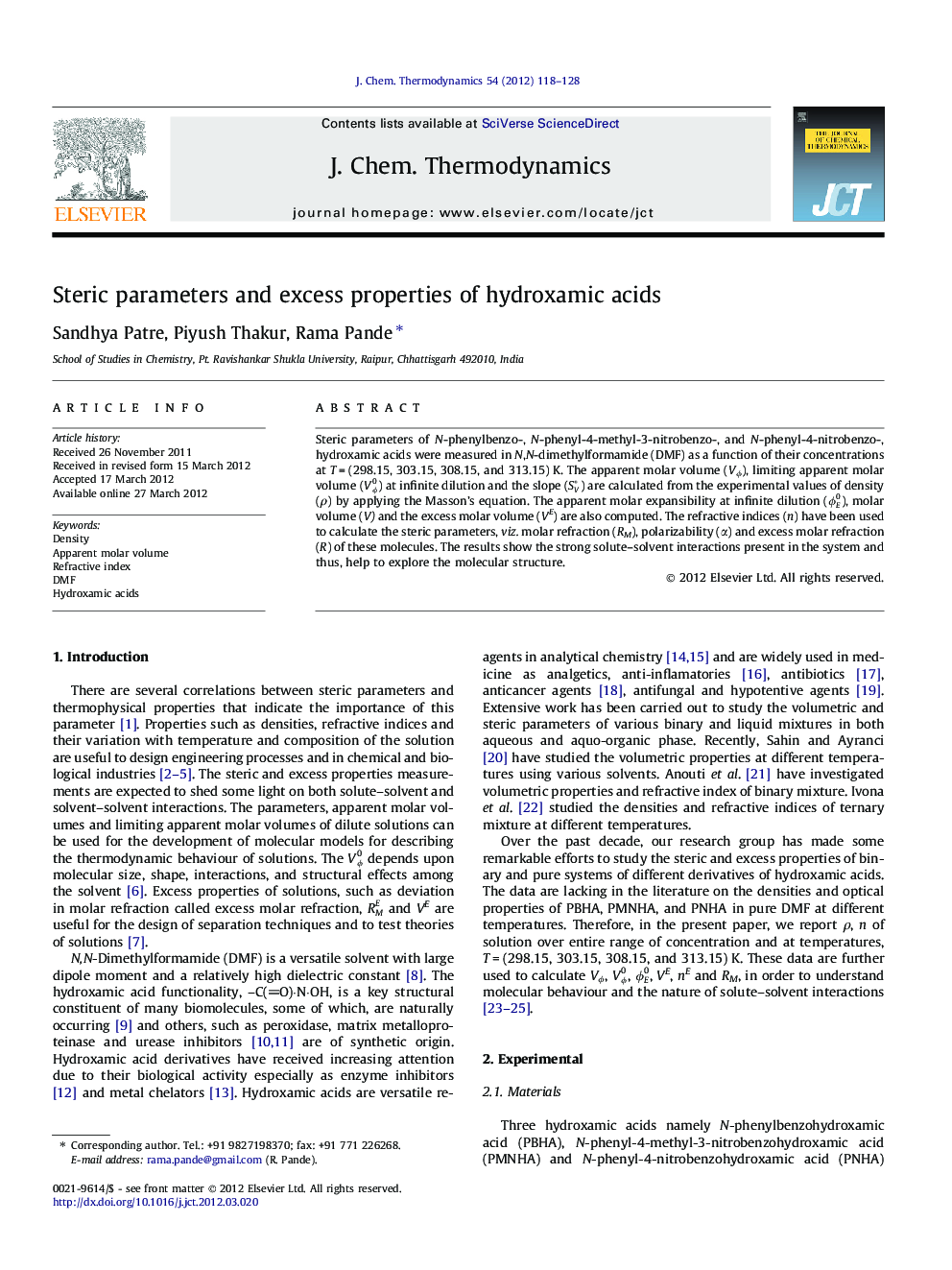| Article ID | Journal | Published Year | Pages | File Type |
|---|---|---|---|---|
| 215654 | The Journal of Chemical Thermodynamics | 2012 | 11 Pages |
Steric parameters of N-phenylbenzo-, N-phenyl-4-methyl-3-nitrobenzo-, and N-phenyl-4-nitrobenzo-, hydroxamic acids were measured in N,N-dimethylformamide (DMF) as a function of their concentrations at T = (298.15, 303.15, 308.15, and 313.15) K. The apparent molar volume (Vϕ ), limiting apparent molar volume (Vϕ0) at infinite dilution and the slope (SV∗) are calculated from the experimental values of density (ρ ) by applying the Masson’s equation. The apparent molar expansibility at infinite dilution (ϕE0), molar volume (V) and the excess molar volume (VE) are also computed. The refractive indices (n) have been used to calculate the steric parameters, viz. molar refraction (RM), polarizability (α) and excess molar refraction (R) of these molecules. The results show the strong solute–solvent interactions present in the system and thus, help to explore the molecular structure.
Graphical abstractPlot of excess molar volume, VE, vs X2 of (A) PBHA in DMF, (B) PMNHA in DMF, and (C) PNHA in DMF, at (■), 298.15 K; (), 303.15 K; (), 308.15 K; and (), 313.15 K.Figure optionsDownload full-size imageDownload as PowerPoint slideFigure optionsDownload full-size imageDownload as PowerPoint slideFigure optionsDownload full-size imageDownload as PowerPoint slideFigure optionsDownload full-size imageDownload as PowerPoint slideHighlights► Apparent molar volume indicates greater solute–solvent interactions. ► Excess properties show higher dispersion force in solution than pure solvent. ► Excess parameters suggest strong solute–solvent and solute–solute interactions. ► Limiting apparent molar expansibilities instigate highly hydrophobic characters. ► Hepler’s constant suggest the structure promoter nature of hydroxamic acids.
